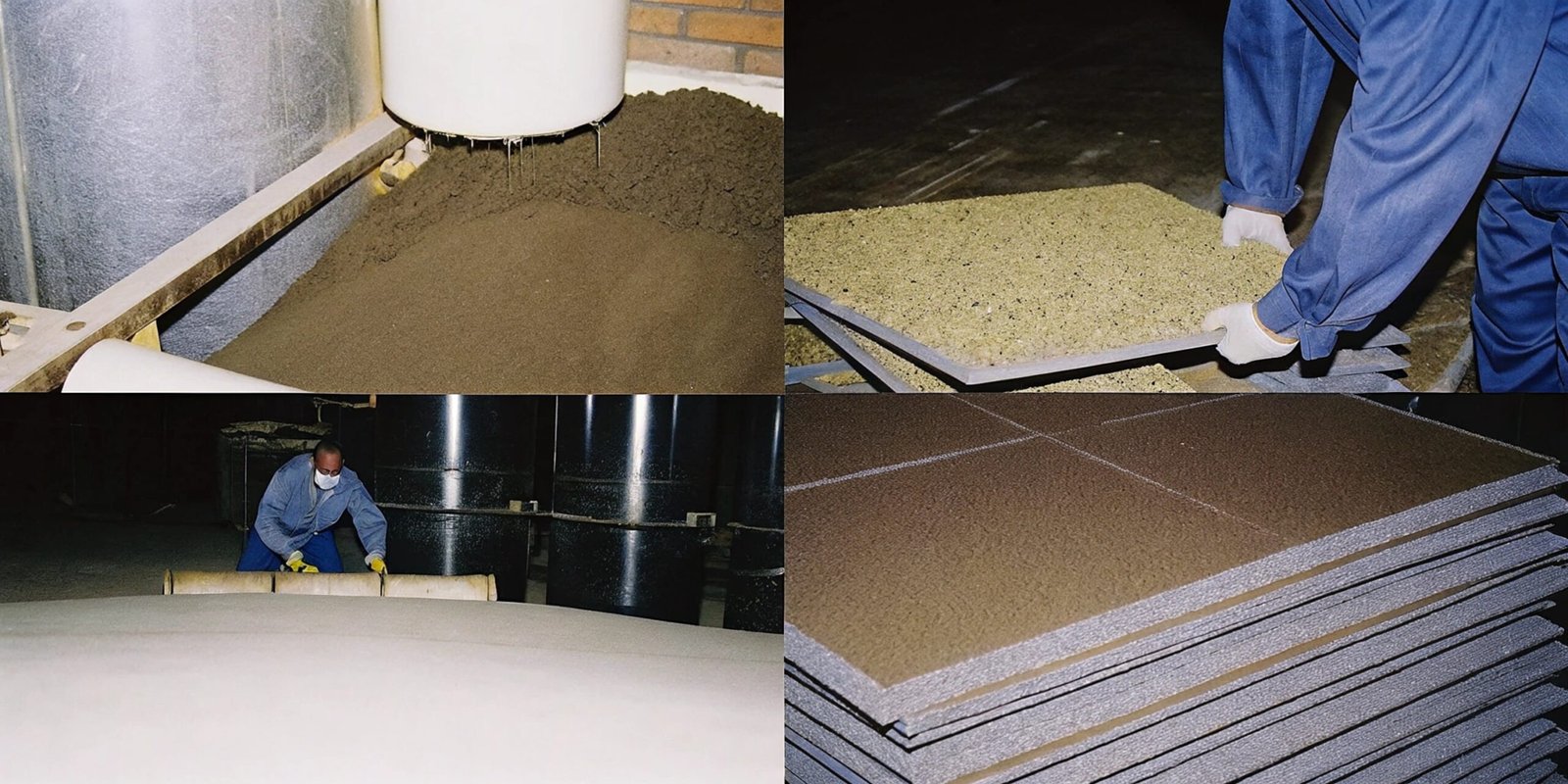
Why is Brown Fused Alumina Used in So Many Different Industries?
Choosing the right abrasive material can be confusing. The wrong one ruins tools and budgets. Brown Fused Alumina is the tough, cost-effective solution many industries rely on.
Brown Fused Alumina is widely used because of its superior hardness, toughness, and affordable price. It is the go-to abrasive for grinding ferrous metals and is also essential for sandblasting, surface preparation, and making high-temperature refractory products.
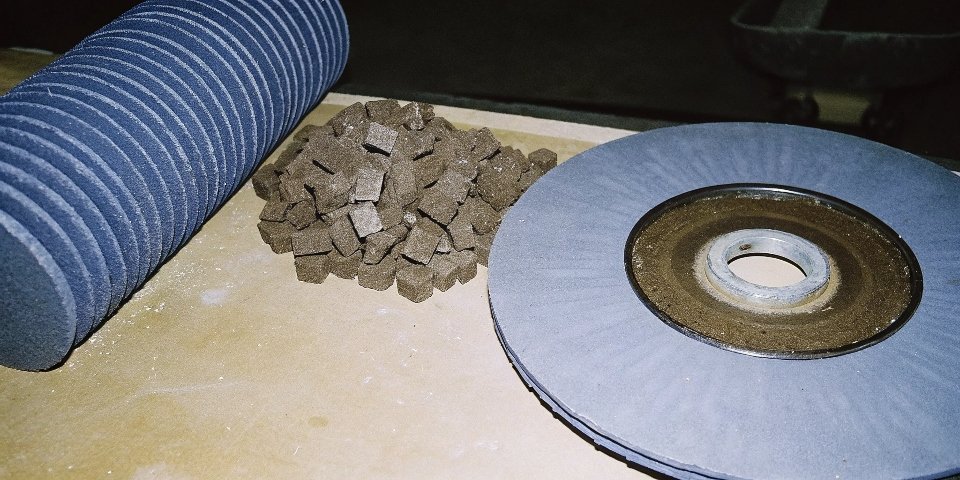
In our factory in Henan, we process tons of Brown Fused Alumina1 (BFA) every single day. As the backbone of China’s abrasive supply, we see how this one material dominates the conventional abrasives market. Its versatility is incredible. It is not just used for the grinding wheels2 we manufacture; our B2B clients also use it for everything from sandblasting3 media to non-slip flooring. To really understand the value of BFA, you have to look at how it fits into the bigger picture of industrial abrasives4 and what makes a high-performance grinding wheel5 work.
Which material is used for making a grinding wheel?
Picking a wheel seems simple. But the material inside determines its success or failure on your job. What makes one wheel cut steel and another cut ceramic?
Grinding wheels are made from two main abrasive material groups. Conventional wheels use Brown Fused Alumina or Silicon Carbide. High-performance, superhard wheels use manufactured Diamond or Cubic Boron Nitride (CBN) for cutting the hardest materials.
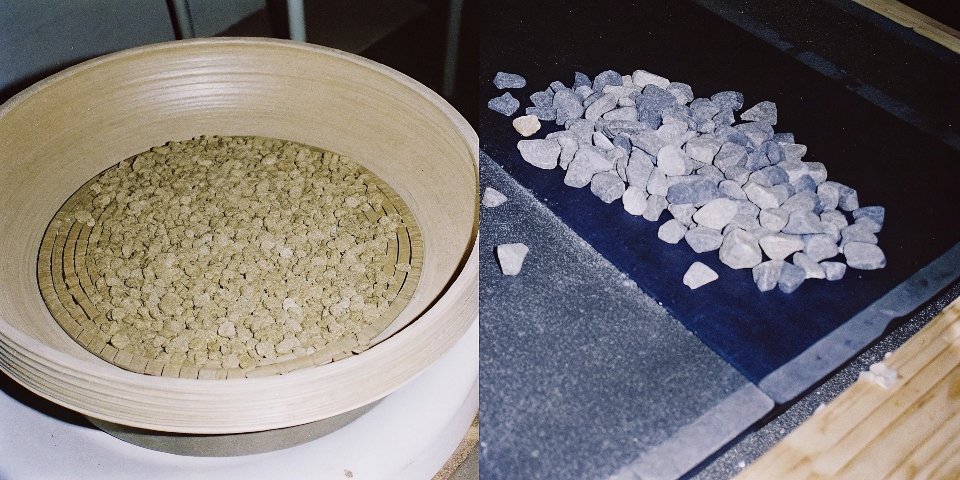
The abrasive grain6 is the heart of the grinding wheel. It does all the cutting. Choosing the right grain is the most important decision in abrasive selection7. As a factory that produces both conventional and superhard wheels, we work with all four major abrasive types daily. Each has a specific job.
1. Conventional Abrasives
These are the workhorses of the industry, used for general-purpose grinding.
- Brown Fused Alumina (BFA): This is the most common abrasive. It is very tough and durable, making it perfect for grinding materials with high tensile strength like carbon steel, alloy steel, and cast iron. Its toughness allows it to handle the pressure of heavy grinding without shattering.
- Silicon Carbide (SiC): This material is harder than BFA but also more brittle. It is best for grinding materials with low tensile strength. This includes non-ferrous metals like aluminum and brass, as well as very hard, brittle non-metals like stone, ceramics, and glass.
2. Superhard Abrasives
These are for the toughest, most demanding jobs.
- Diamond: As the hardest known material, it is the ultimate abrasive for cutting non-metallic materials. Think concrete, asphalt, glass, and super-hard ceramics. You should never use a diamond wheel on steel, as the heat of grinding causes a chemical reaction that destroys the diamond.
- Cubic Boron Nitride (CBN): CBN is the second-hardest material. Its main advantage is that it is thermally and chemically stable when grinding hard ferrous metals. This makes it the perfect choice for grinding hardened tool steels, a job that is too difficult for BFA and impossible for diamond.
What materials are grinders used on?
You have a grinder and a project. But using the wrong disc on the wrong material can destroy both. How do you match the abrasive to the workpiece?
Grinders are used on nearly every hard material. This includes all types of metals like steel, iron, and aluminum, as well as non-metals like stone, concrete, tile, glass, and composites. The key is choosing the correct disc for each specific material.
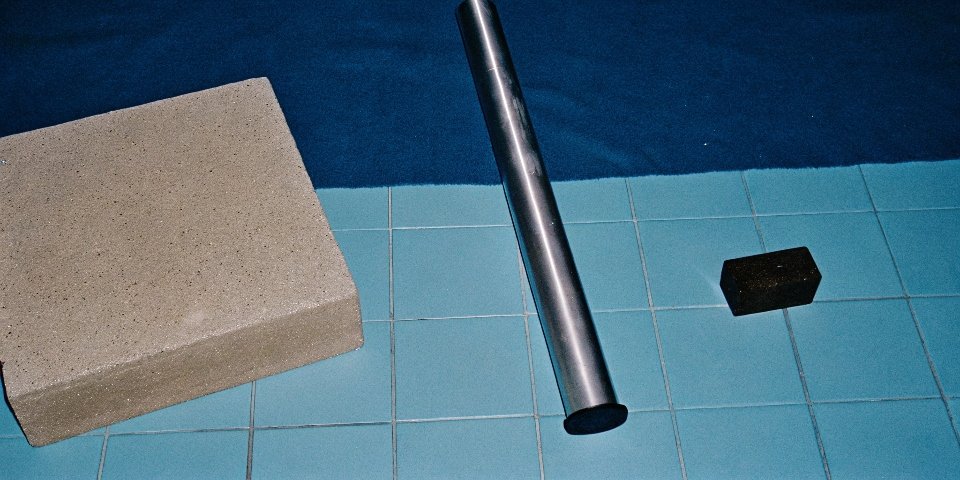
An angle grinder itself is just a motor that spins a disc. The disc is what matters. The wrong pairing of disc and material leads to poor results, rapid tool wear, and safety hazards. As an OEM supplier, we help our clients select the perfect abrasive formulation for their specific application. It always comes down to the workpiece material.
| Material Type | Common Examples | Recommended Abrasive | Why It Works |
|---|---|---|---|
| Ferrous Metals | Carbon Steel, Cast Iron | Brown Fused Alumina | BFA’s toughness withstands the high pressures and heat of grinding steel. |
| Non-Ferrous Metals | Aluminum, Brass, Copper | Silicon Carbide | Softer metals clog wheels. The friable nature of SiC helps it self-sharpen. |
| Hard Non-Metals | Concrete, Stone, Tile | Diamond | Diamond is the only material hard enough to effectively cut these materials. |
| Hardened Steels | Tool Steel, HSS | Cubic Boron Nitride (CBN) | CBN is hard enough to cut hardened steel and does not react chemically with iron at high temperatures. |
Ultimately, grinders can be used on almost anything, provided you have the right abrasive disc. Using a Brown Fused Alumina wheel to cut concrete will be slow, generate immense heat, and destroy the wheel. Using a diamond blade on the same concrete will slice through it cleanly and efficiently. The material dictates the tool.
What are the four main grinding wheel components?
A grinding wheel looks like a solid disc. But it is actually a complex, engineered tool with several hidden components. Understanding them is key to performance and safety.
A grinding wheel consists of four main components. These are the abrasive grains that do the cutting, the bond that holds the grains together, the reinforcement that adds strength, and the pore structure, which provides clearance for metal chips.
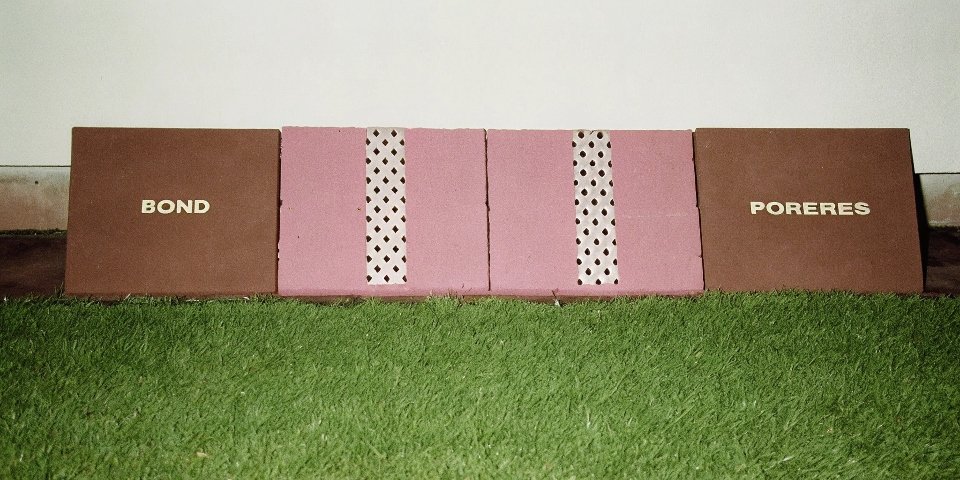
When we manufacture a grinding wheel in our Henan facility, we are not just mixing and pressing a disc. We are carefully engineering a tool by combining four critical elements. Each one has a job to do.
1. Abrasive Grain
This is the component that does the actual cutting. As we have discussed, this could be Brown Fused Alumina (BFA), Silicon Carbide, Diamond, or CBN. The size of the grain (grit size) determines the finish, from coarse grits for rapid material removal to fine grits for smooth finishing.
2. Bond
The bond is the "glue" that holds the abrasive grains together. The type of bond determines the wheel’s characteristics. The most common is a resinoid bond, made from synthetic resins, which is perfect for cutting-off wheels because of its strength and flexibility. Vitrified bonds are glass-like and are used for precision grinding wheels.
3. Reinforcement
This is a critical safety feature. For thin cutting-off wheels, we embed layers of high-strength fiberglass mesh into the wheel during production. This reinforcement dramatically increases the wheel’s strength and helps prevent it from shattering at high RPMs. You should never use a cutting wheel that does not have this reinforcement.
4. Pore Structure
The spaces between the grains and bond are called pores. This is not just empty space; it is a designed part of the wheel. These pores provide clearance for the metal shavings (swarf) to escape during grinding. Without them, the wheel would quickly become clogged and stop cutting.
How do they make grinding wheels?
Ever wonder how sand-like grain becomes a solid, fast-spinning wheel? The process is precise and transforms simple raw materials into a high-performance tool.
Grinding wheels are made by mixing abrasive grains with a bonding agent. This mixture is then pressed into a mold under high pressure. Finally, the molded wheel is cured in a high-temperature oven, fusing the bond and creating a solid, durable tool.
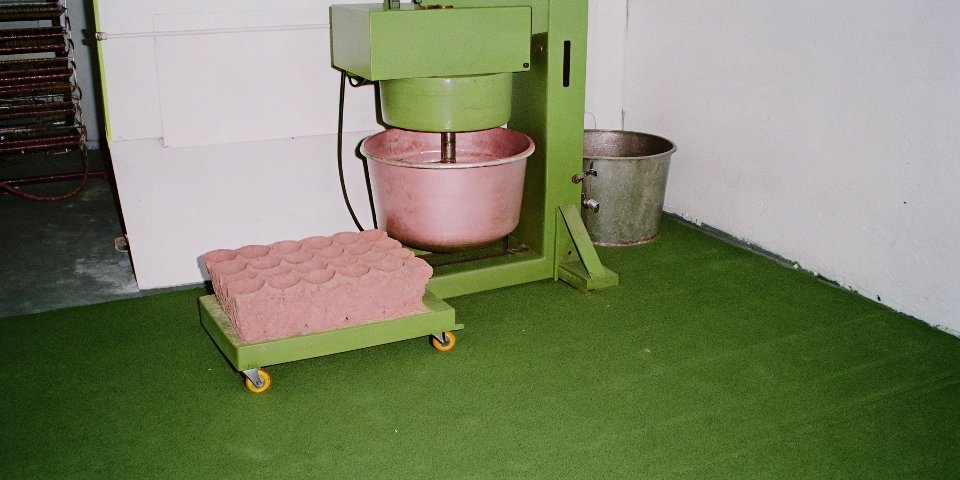
Having manufactured abrasive wheels for nearly 30 years, I can tell you the process is like a high-tech baking recipe. It requires precision, quality materials, and careful control at every stage to create a safe and effective tool. Here is a simplified look at how we make a standard resinoid-bond8ed cutting disc9.
Step 1: Mixing
We begin by precisely weighing our raw materials: the abrasive grains (like Brown Fused Alumina), powdered resin bonding agents, and other additives. These are placed into large industrial mixers to create a uniform, sand-like mixture.
Step 2: Molding
A specific amount of this mixture is poured into a steel mold. We add the fiberglass reinforcement layers and the metal center ring. A hydraulic press then comes down with hundreds of tons of pressure, compacting the loose mix into a dense, solid "green" wheel that holds its shape.
Step 3: Curing (Baking)
The green wheels are carefully stacked and loaded into long, computer-controlled ovens, or kilns. They are slowly heated up to around 200°C (400°F) and "baked" for a specific number of hours. This curing process melts the resin, which flows around the abrasive grains and hardens, permanently locking everything together into an incredibly strong composite material.
Step 4: Inspection and Testing
After cooling, every batch of wheels undergoes strict quality control. We check for visual defects and correct dimensions. Most importantly, we take sample wheels and subject them to a spin test, running them at speeds far higher than their rated RPM to ensure they are safe and will not break under normal use.
Conclusion
Brown Fused Alumina is a key industrial abrasive. Understanding a wheel’s components—grains and bond—and matching them to the material is crucial for efficient and safe grinding operations.
-
Explore the advantages of Brown Fused Alumina, a cost-effective and tough abrasive material widely used in various industries. ↩
-
Learn about the various types of grinding wheels and their specific applications in industrial grinding processes. ↩
-
Discover how Brown Fused Alumina is essential for sandblasting, providing effective surface preparation and finishing. ↩
-
Explore the various types of industrial abrasives and their applications in different manufacturing processes. ↩
-
Learn about the features that define high-performance grinding wheels and their applications in demanding tasks. ↩
-
Understand the critical role of abrasive grain in grinding wheels and how it affects cutting performance. ↩
-
Learn the key factors in abrasive selection to ensure optimal performance and safety in your grinding tasks. ↩
-
Explore the different types of bonds in grinding wheels and how they influence the wheel’s characteristics and performance. ↩
-
Understand the differences between cutting discs and grinding wheels to choose the right tool for your project. ↩
Written by
leeon
You may also be interested in:
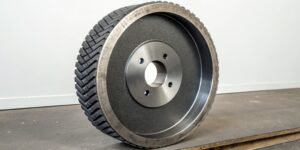
What's the application of CBN Wheels?
Struggling with grinding hard steels? Frequent wheel changes and poor finishes can hurt your bottom line. We have found that CBN wheels provide the durability
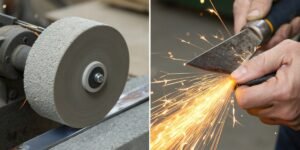
What is the difference between grinding and honing a blade?
A dull blade is a frustrating problem. It slows down production and ruins your workpiece. Using the wrong technique to fix it can cause permanent
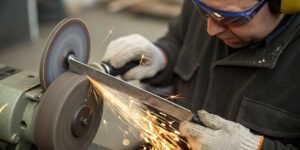
How to sharpen a knife on a bench grinder?
Is your dull knife slowing you down? A bench grinder seems like a quick fix, but you’re worried about ruining the blade. You need a
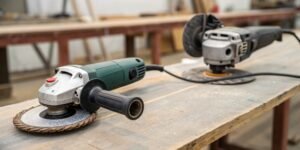
Can you use an angle grinder as a sander?
Your sanding project is tough, and your regular sander is not powerful enough. You look at your angle grinder. It has the power, but is
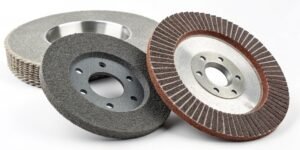
How to judge the quality of a grinding wheel?
Choosing the wrong wheel wastes money and ruins parts. Poor quality leads to downtime and rejection. A few key checks can guarantee you pick the
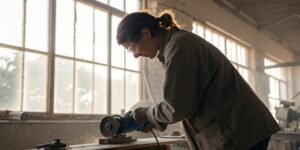
What is low stress grinding?
Struggling with parts failing due to hidden stress from grinding? This common issue causes cracks and reduces component life, costing you money. Low stress grinding
